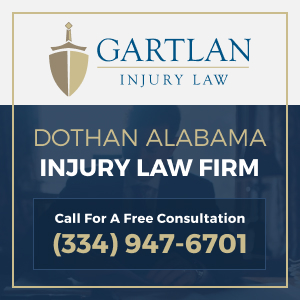Fatal Rear-End Collision on US 231 Near Brundidge Alabama Claims Life of Bill B. Williams, 54, Injures Three
1 killed, 3 injured in Sunday afternoon Pike County crash
The two-vehicle crash happened just before 2 p.m. Sunday on U.S. 231 near the 177 mile marker. That’s about a mile north of Brundidge, in Pike County.
A devastating rear-end collision on U.S. Highway 231 in Pike County, Alabama resulted in one fatality and three injuries on Sunday afternoon. The incident occurred just before 2 p.m. on January 14, 2025, near the 177-mile marker, approximately one mile north of Brundidge. According to the Alabama Law Enforcement Agency (ALEA), Bill B. Williams, 54, of Brundidge, was driving a 2009 Hyundai Genesis when his vehicle collided with the rear of a 1997 Toyota 4Runner. Williams, who was not wearing a seatbelt at the time of the crash, was ejected from his vehicle and pronounced dead at the scene. The 48-year-old Troy resident driving the 4Runner and two passengers - a 50-year-old from Troy and a 51-year-old from Ariton - sustained injuries requiring immediate medical attention. The Ariton resident, also ejected due to not wearing a seatbelt, was transported to HCA Florida Fort Walton-Destin Hospital for treatment.
Complexities in Rear-End Collision Claims
While rear-end collisions are often presumed to be the fault of the following driver, these cases can present unique challenges in personal injury claims. Insurance companies may dispute the severity of injuries, particularly in cases involving soft tissue damage or whiplash, which can be difficult to document through traditional imaging. Pre-existing conditions, especially those involving the neck or back, may also complicate the claims process as insurers often argue about whether symptoms were caused by the accident or were pre-existing. The presence of multiple vehicles, such as in this Pike County crash, can introduce questions about comparative negligence and the proper apportionment of damages among different insurance policies. Additionally, when seat belts weren't worn, as in this case, insurance companies may attempt to reduce compensation based on Alabama's seat belt defense law, which can allow evidence of non-use to be considered in determining damages. Documentation of skid marks, vehicle damage patterns, and event data recorder information often becomes crucial in establishing the exact sequence of events and countering potential defense arguments about sudden stops or other contributing factors.
Location and Infrastructure
The collision occurred on a crucial stretch of U.S. 231, a major north-south highway that serves as a primary connector between Montgomery and Dothan. This section of the highway, located just north of Brundidge, is characterized by its rural setting but maintains significant traffic flow as a primary commercial and commuter route. The 177-mile marker area is situated in a transition zone where drivers often adjust their speeds as they approach the Brundidge city limits. This four-lane divided highway typically maintains a speed limit of 65 mph in rural areas, reducing to 55 mph as it nears municipal boundaries. The road configuration at this location includes wide shoulders and clear visibility, though afternoon sun glare can sometimes affect drivers' vision.
Legal Rights and Considerations
Under Alabama Code Section 32-5A, all vehicle occupants are required by law to wear seatbelts, and non-compliance can impact liability claims and insurance settlements. Alabama follows a contributory negligence system, which can significantly affect recovery in auto accident cases. Victims and their families typically have two years from the date of the accident to file personal injury or wrongful death claims. Potential compensation may include medical expenses, lost wages, pain and suffering, and in the case of fatal accidents, funeral expenses and loss of companionship. Insurance claims should be initiated promptly, as Alabama law requires accidents resulting in injury, death, or property damage exceeding $500 to be reported within 30 days. An experienced Alabama personal injury lawyer will handle all aspects of the legal claim.
Related Resources
Emergency Services:
- Pike County Sheriff's Office: (334) 566-4347
- Brundidge Police Department: (334) 735-3333
- Troy Regional Medical Center: (334) 670-5000
Traffic Safety Resources:
- Alabama Department of Transportation Safety Office
- Pike County Emergency Management Agency
- ALEA Highway Patrol Division - Troy Post
Support Services:
- Alabama Crime Victims' Compensation Commission
- Pike County Victim Service Officers
- Alabama Head Injury Foundation
Legal References:
- Alabama Code Section 32-5A (Seat Belt Law)
- Alabama Department of Insurance Consumer Services
- Alabama State Bar Referral Service
What you need to know after a serious Brundidge car accident
When someone has been seriously injured in a car crash in Brundidge, they are faced with unexpected medical costs and lost income. In the weeks and months following a car accident, injured people and their families can be overwhelmed as they struggle to manage day-to-day living.
After a serious or fatal car collision, it is crucial to quickly get the information needed to make good decisions. Getting appropriate medical treatment is just one aspect of healing. Finding help in handling the insurance claim that will begin financial recovery is another.
If the injuries are serious or if you have questions about what you should do, it is best to contact an experienced Brundidge injury lawyer for a free, no-obligation consultation. Serious injury accident claims are difficult to handle without the assistance of a lawyer who understands the process and can obtain the highest possible settlement. Learn more about how a Brundidge car accident attorney can help.


